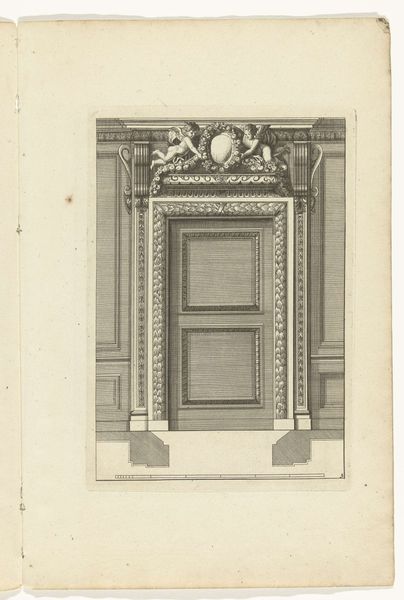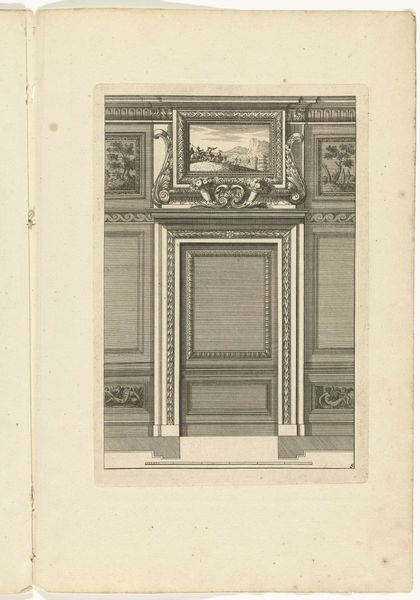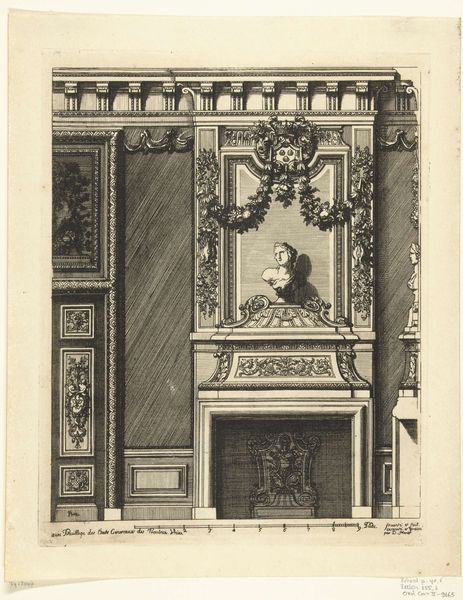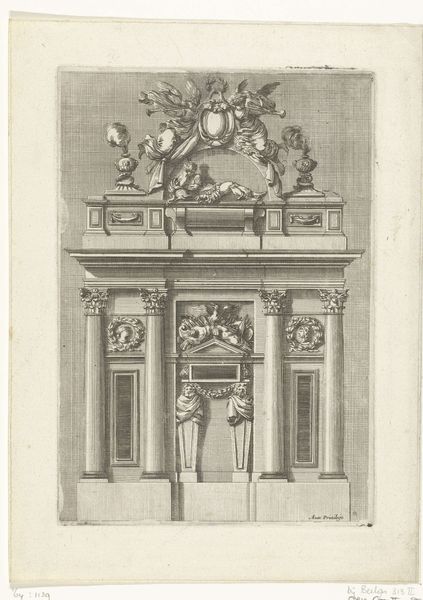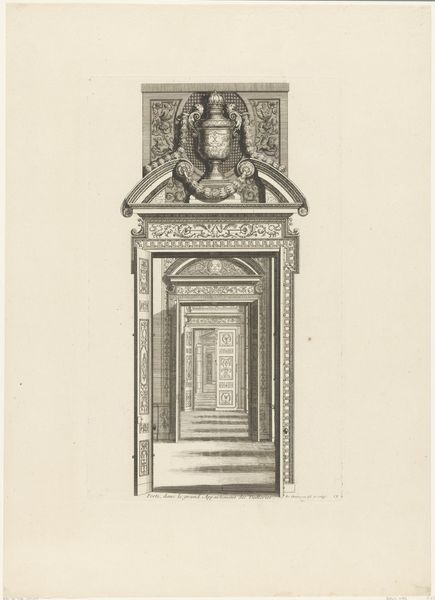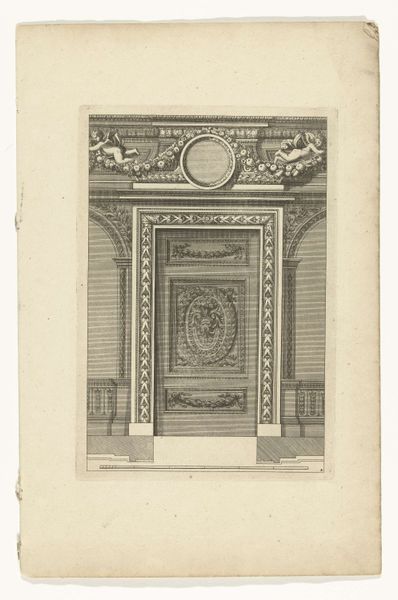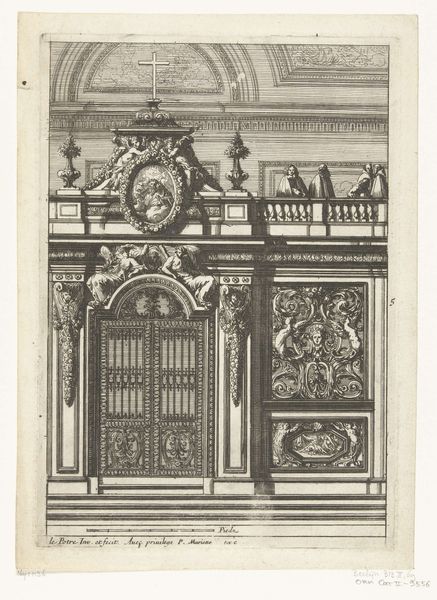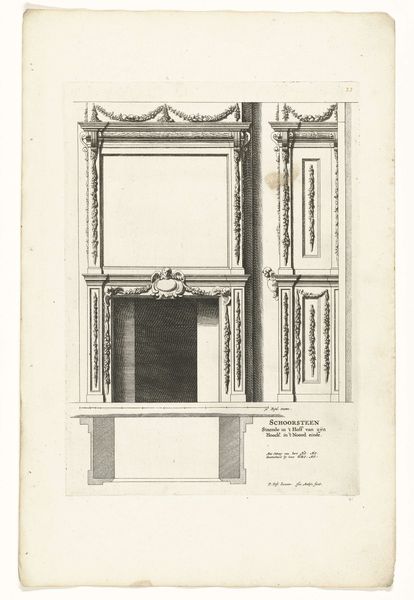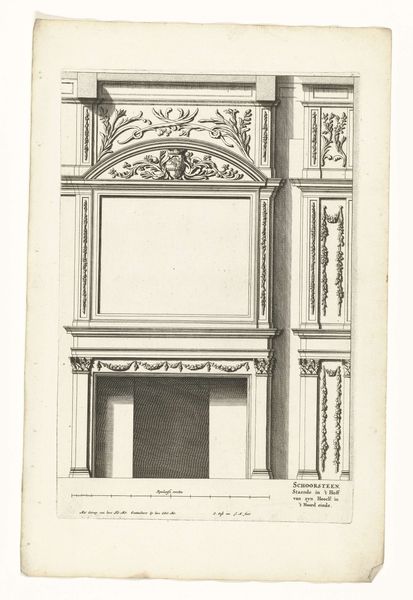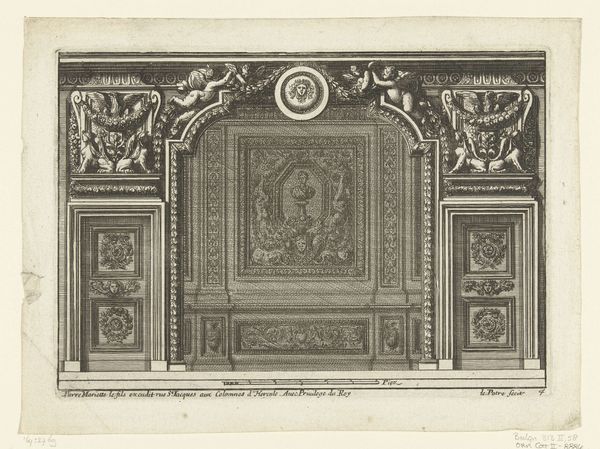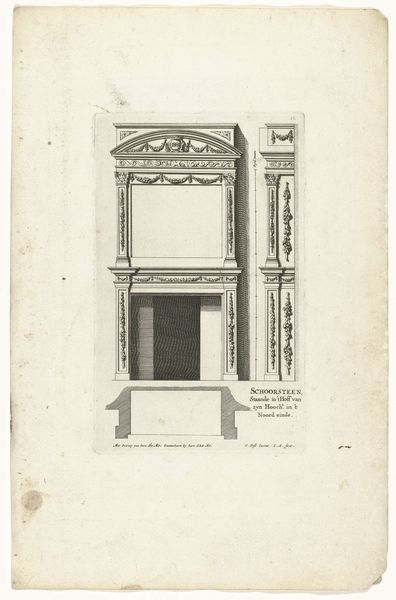
engraving, architecture
#
baroque
#
decorative-art
#
engraving
#
architecture
Dimensions: height 213 mm, width 147 mm
Copyright: Rijks Museum: Open Domain
Curator: Welcome. Before us, we have a fascinating engraving entitled "Titelblad: Nouveau Livre d' Porte d'La Chambre," a baroque title page believed to be created sometime between 1726 and 1765. It is held in the collection of the Rijksmuseum. Editor: My immediate impression is one of opulent restriction. The sheer detail feels overwhelming, almost suffocating, and yet the perfectly symmetrical composition and sharp line work evoke a profound sense of order and hierarchy. Curator: The work reflects the period's fascination with elaborate decoration and formal structure. These kinds of design books would have been critical in disseminating architectural styles across Europe, offering patterns and inspiration for carpenters and builders. It's important to see how print culture could affect not just taste but actual physical environments. Editor: Precisely! I wonder, though, about the intended audience and its effects. This isn't just about disseminating style. Who had the access to, and space for, such embellishment? This doorway whispers of the entrenched inequalities of Baroque society and an unquestioned power of wealthy elite, and even royalty. Curator: True, these design books primarily catered to wealthy patrons commissioning elaborate interiors. Consider the cherubic figures adorning the doorway, a motif signaling refinement and status. However, their use, in this image and within actual constructed rooms, reinforced the ideologies attached to power and class. Editor: Exactly. Also note how a common structure like the door is ornamented, modified, and recontextualized to suit these exclusive spheres. And this title page? Another gatekeeper. It controls access not to a room, but to the very ideas about taste. It makes me uneasy. Curator: I find myself contemplating how access to this information also provided an opportunity for upward mobility in some skilled trades. Craftsmen used these prints to master decorative techniques, improving their station even if they themselves did not inhabit such spaces. The circulation of design knowledge complicates its socio-political significance. Editor: It is that very circulation, I suggest, which is not at all organic. Looking at the cherubic imagery you have just referred to, and questioning who those images were curated for, in order to maintain a system of ideological subjugation. Thank you for speaking about that tension, I’ve been wanting to discuss such ideological factors since our viewing began! Curator: This tension between social mobility and the perpetuation of privilege makes Baroque design so intriguing, don't you think? Thanks to prints, the ornate style spread throughout Europe. Editor: Yes, a great tension! A reminder that seemingly neutral aesthetic choices are often deeply entwined with socio-political power structures. Curator: Indeed. A great piece to discuss that complex relationship.
Comments
No comments
Be the first to comment and join the conversation on the ultimate creative platform.

